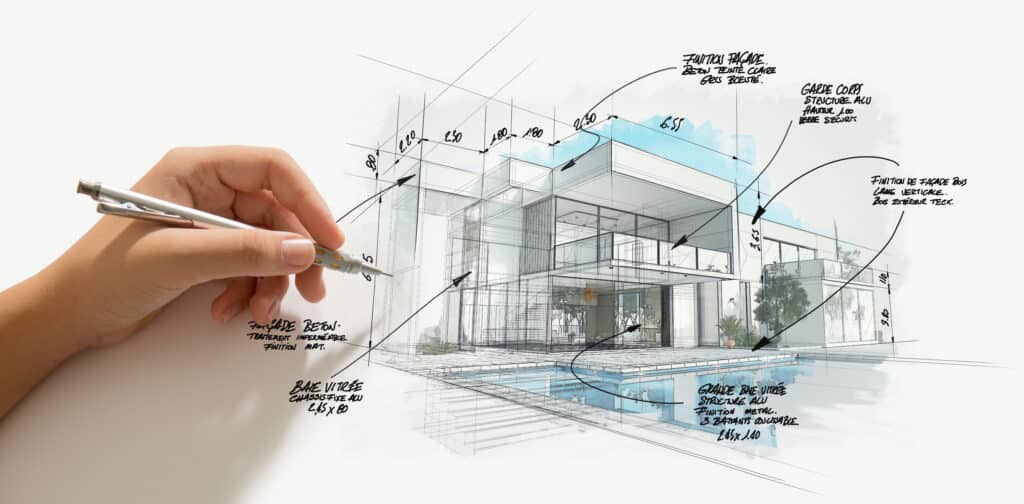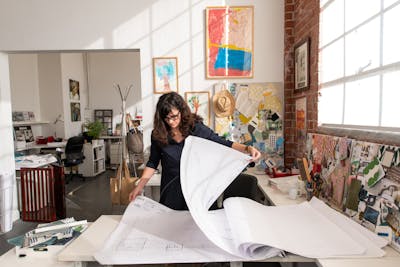Leading Hampshire Architects for Custom and Innovative Designs
Wiki Article
The Art of Balance: How Interior Design and Home Designer Collaborate for Stunning Outcomes
In the world of home layout, striking a balance in between aesthetic appeals and functionality is no tiny feat. This delicate equilibrium is achieved with the unified cooperation between indoor developers and designers, each bringing their special competence to the table. Keep with us as we check out the ins and outs of this collective process and its transformative impact on home design.Recognizing the Core Differences In Between Interior Decoration and Home Architecture
While both Interior Design and home design play important functions in producing cosmetically pleasing and practical areas, they are naturally various disciplines. Home architecture mostly concentrates on the architectural aspects of the home, such as constructing codes, safety guidelines, and the physical building and construction of the area. It deals with the 'bones' of the structure, functioning with spatial dimensions, load-bearing wall surfaces, and roof covering styles. On the other hand, Interior Design is much more concerned with boosting the sensory and aesthetic experience within that framework. It entails choose and preparing furnishings, selecting color pattern, and incorporating decorative components. While they function in tandem, their duties, obligations, and areas of know-how diverge substantially in the development of an unified home atmosphere.The Synergy Between Home Style and Interior Decoration
The harmony between home architecture and Interior Design depends on a common vision of design and the improvement of useful appearances. When these two fields line up harmoniously, they can change a home from regular to remarkable. This collaboration needs a deeper understanding of each discipline's concepts and the capacity to produce a natural, aesthetically pleasing setting.Unifying Design Vision
Merging the vision for home design and Interior Design can create an unified home that is both practical and cosmetically pleasing. The equilibrium begins with an integrated attitude; designers and indoor developers collaborate, each bringing their competence. This unison of concepts develops the style vision, a blueprint that guides the task. This common vision is important for uniformity throughout the home, making certain a fluid change from exterior style to indoor areas. It advertises a synergistic strategy where building elements complement Interior Design components and vice versa. The outcome is a natural living area that shows the homeowner's way of life, character, and taste. Hence, unifying the design vision is important in mixing design and Interior Design for stunning results.Enhancing Functional Aesthetic Appeals
Just how does the synergy in between home style and interior design boost useful visual appeals? Architects lay the foundation with their architectural layout, making sure that the room is efficient and useful. A designer may design a residence with high ceilings and huge home windows.Significance of Cooperation in Creating Balanced Spaces
The collaboration in between interior developers and engineers is critical in producing well balanced rooms. It brings harmony between layout and architecture, bring to life rooms that are not only aesthetically pleasing however also practical. Discovering effective collaborative techniques can provide understandings right into how this harmony can be successfully achieved.Harmonizing Style and Design
Equilibrium, a crucial facet of both Interior Design and design, can just really be achieved when these two fields operate in harmony. This harmony is not just an aesthetic factor to consider; it affects the functionality, toughness, and ultimately, the livability of a room. Interior architects and designers must recognize each other's functions, respect their competence, and interact properly. They have to consider the interplay of structural elements with decoration, the flow of spaces, and the impact of light and shade. This collective process leads to a cohesive, balanced layout where every component has an objective and contributes to the total aesthetic. Therefore, harmonizing design and style is not just concerning creating attractive areas, yet about crafting rooms that work flawlessly for their citizens.Successful Collective Strategies

Case Studies: Effective Assimilation of Style and Design
Checking out a number of study, it emerges just how the effective combination of Interior Design and architecture can change a room. The Glass Residence in Connecticut, renowned for its minimalistic style, is one such example. Designer Philip Johnson and indoor designer Mies van der Rohe collaborated to produce an unified equilibrium between the framework and the interior, leading to a smooth circulation from the outside landscape to the internal living quarters. Another exemplar is the Fallingwater House in Pennsylvania. Architect Frank Lloyd Wright and indoor designer Edgar Kaufmann Jr.'s collaborative efforts lead to a stunningly unique house that mixes with its all-natural surroundings. These situation studies underscore the profound influence of an effective design and style cooperation.
Getting Over Obstacles in Layout and Style Partnership
In spite of the indisputable advantages of an effective collaboration in between interior style and design, read more it is not without its difficulties. Designers might prioritize structural honesty and safety and security, while designers focus on comfort and style. Reliable communication, shared understanding, and compromise are essential to get rid of these challenges and achieve a successful click here and unified partnership.
Future Trends: The Advancing Relationship Between Home Architects and Interior Designers
As the globe of home layout continues to advance, so does the relationship in between designers and indoor developers. The fad leans in the direction of an extra collaborative and integrated technique, breaking without conventional functions. Designers are no more exclusively concentrated on architectural stability, but also involve in improving aesthetic allure - Winchester architect. On the other hand, indoor developers are embracing technological aspects, affecting total design and functionality. This progressing symbiosis is driven by advancements in technology and the growing demand for rooms that are not just aesthetically pleasing however also practical and sustainable. The future promises a more cohesive, ingenious, and flexible strategy to home layout, as designers and engineers remain to blur the lines, cultivating a relationship that really symbolizes the art of equilibrium. check hereConclusion
The art of equilibrium in home style is accomplished through the harmonious cooperation in between indoor designers and architects. Regardless of obstacles, this collaboration promotes growth and innovation in layout.While both indoor design and home architecture play essential duties in producing aesthetically pleasing and functional rooms, they are inherently different techniques.The harmony between home style and indoor design exists in a shared vision of design and the improvement of practical visual appeals.Unifying the vision for home style and interior design can produce a harmonious living room that is both practical and aesthetically pleasing. Hence, unifying the design vision is critical in mixing architecture and indoor design for magnificent results.
Just how does the synergy in between home design and indoor style boost practical aesthetics? (Winchester architect)
Report this wiki page